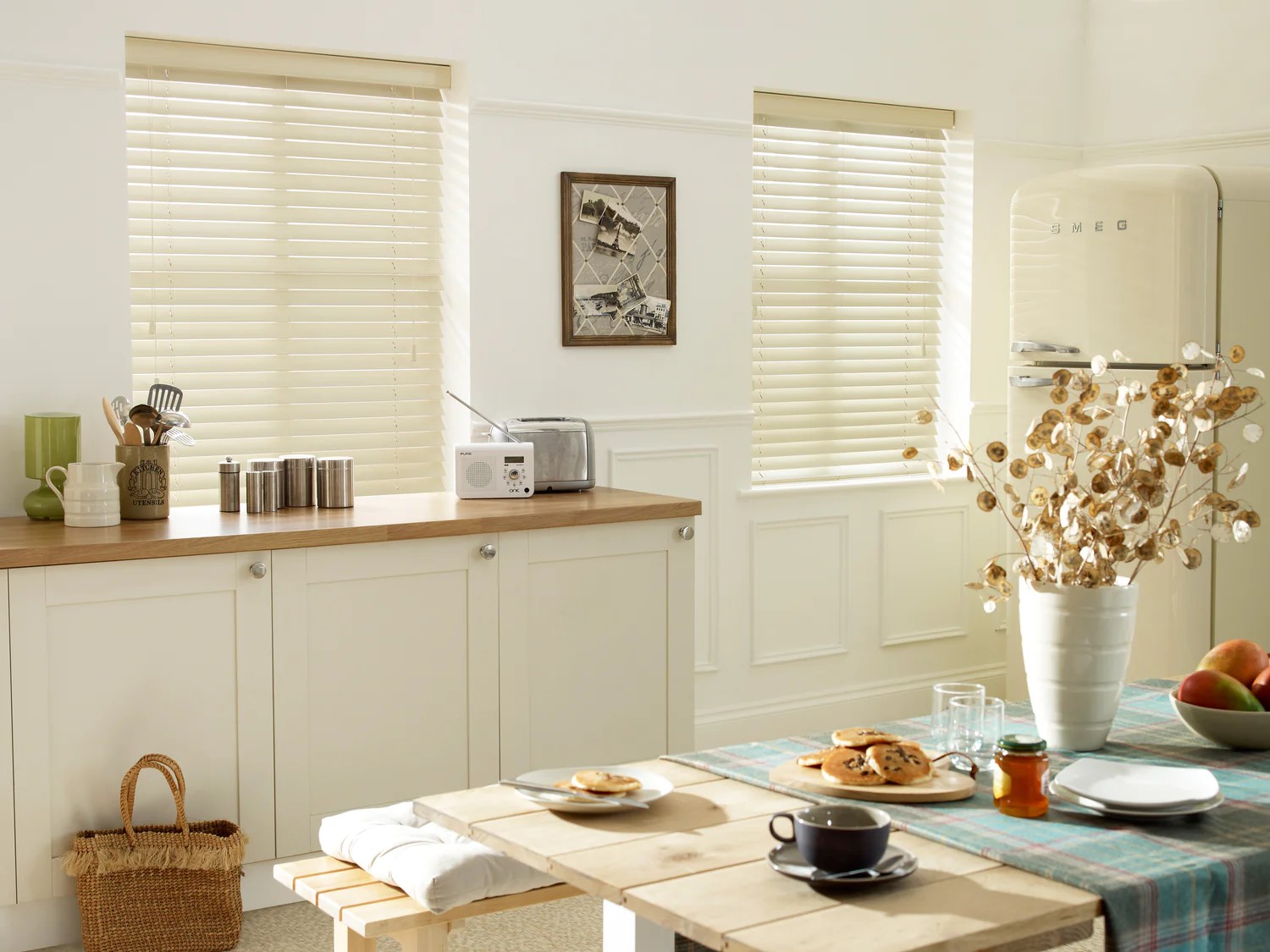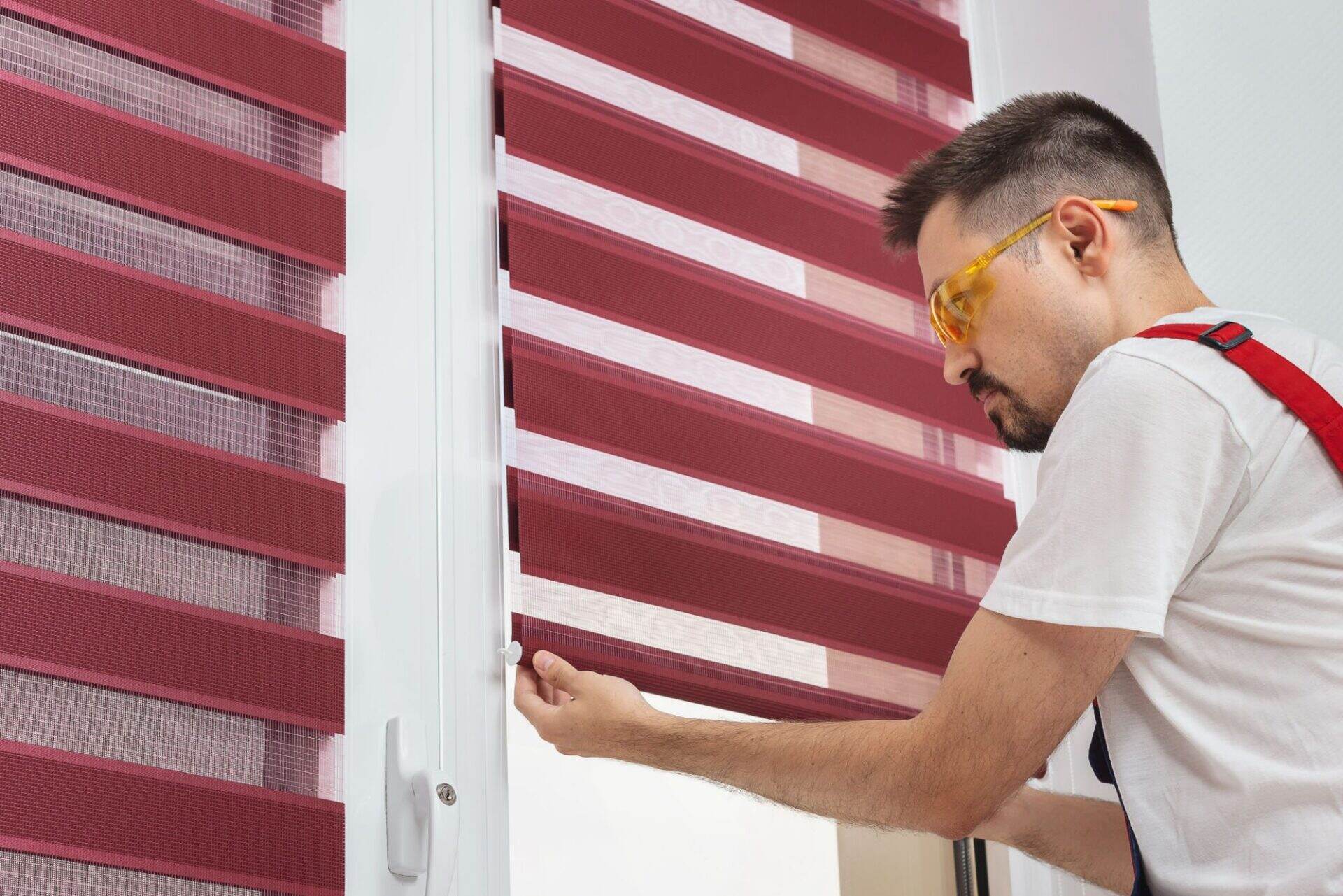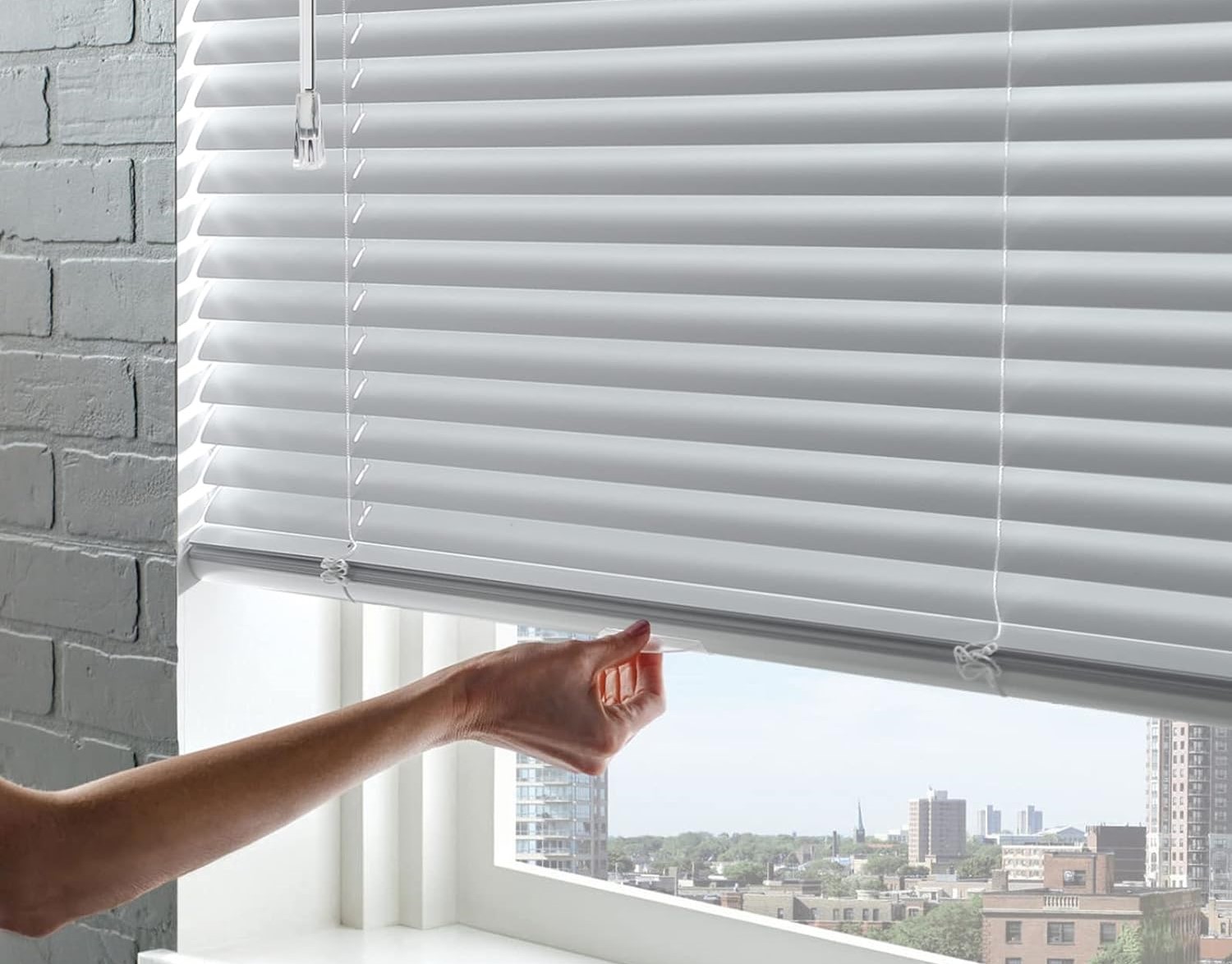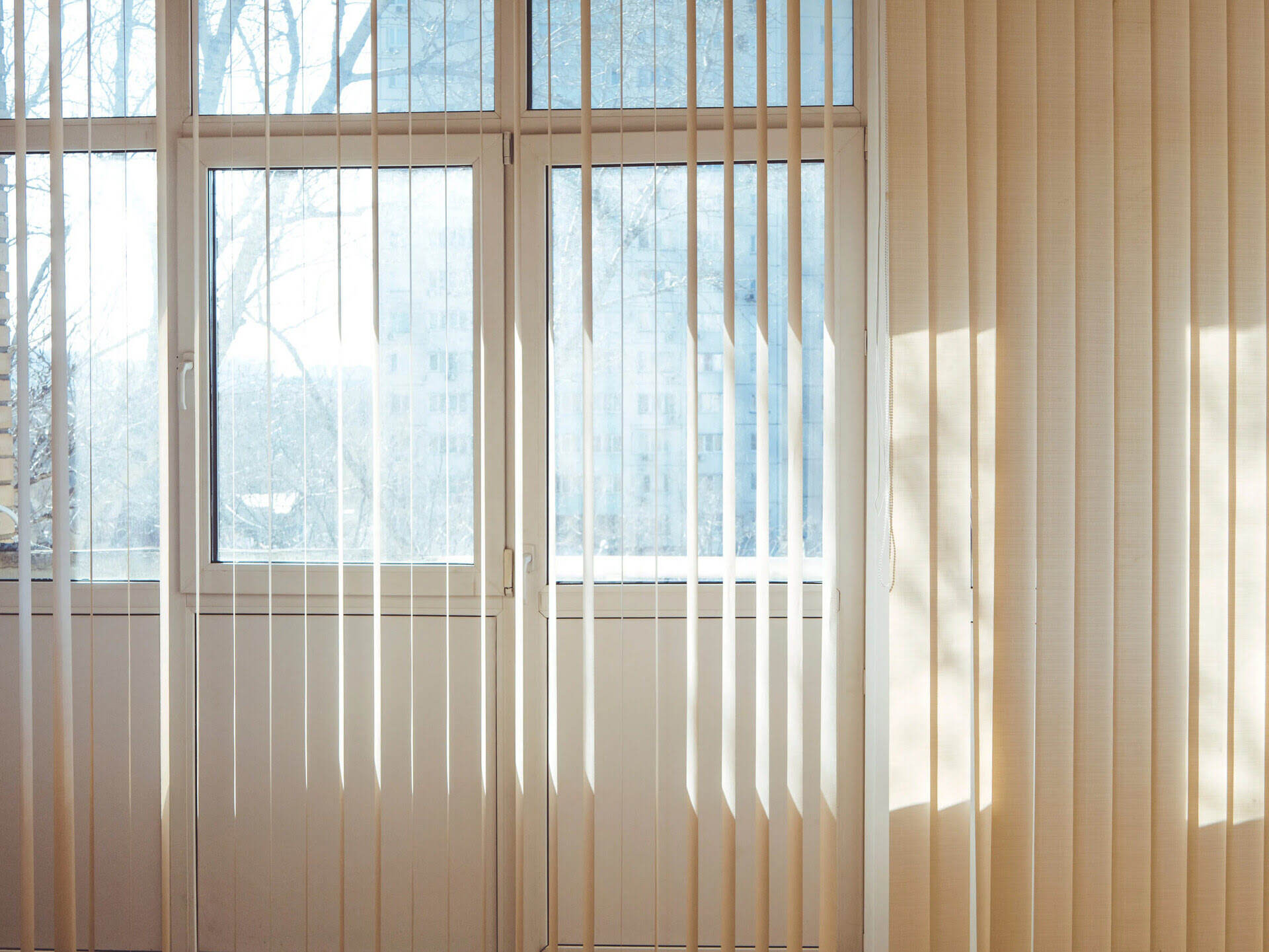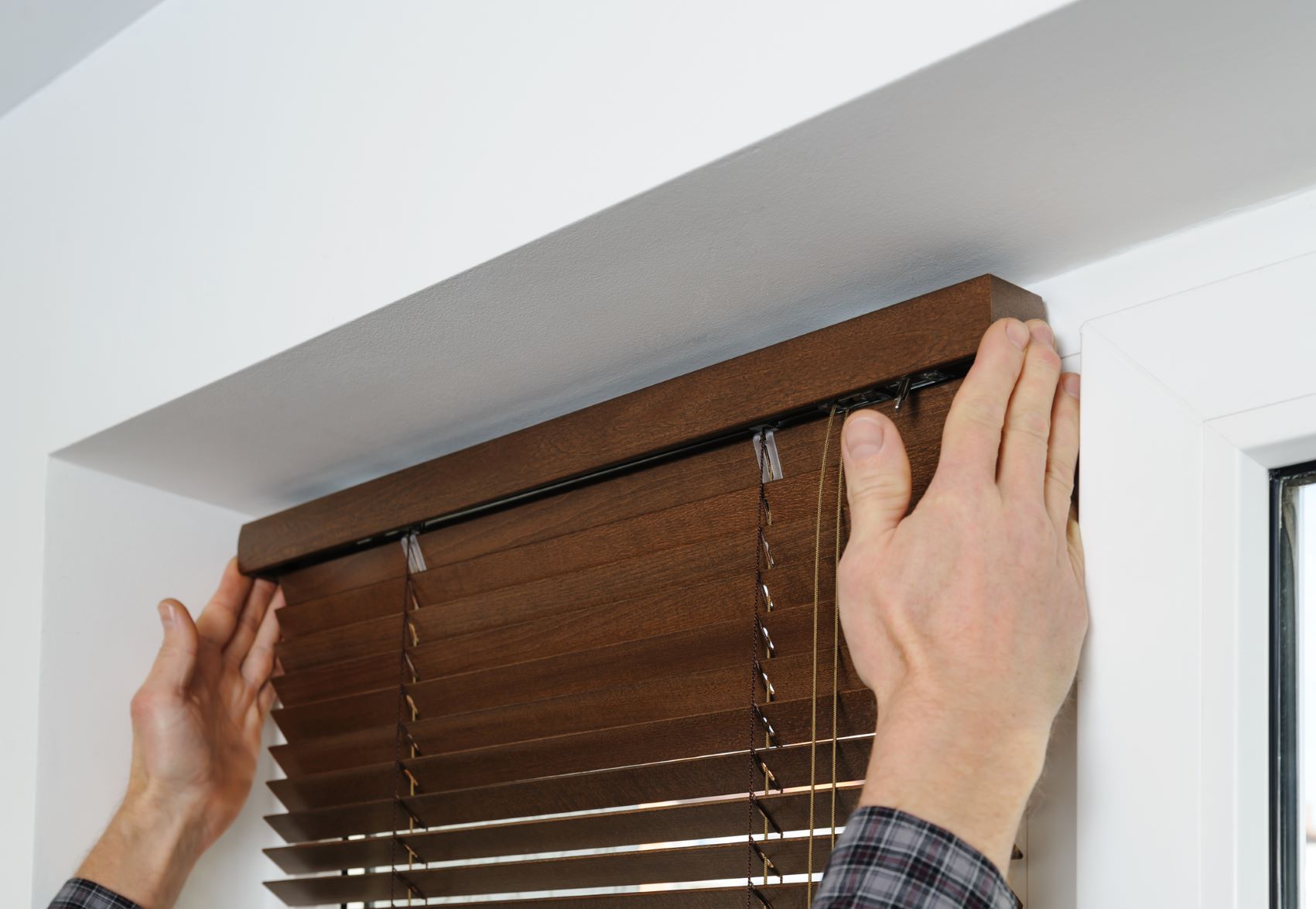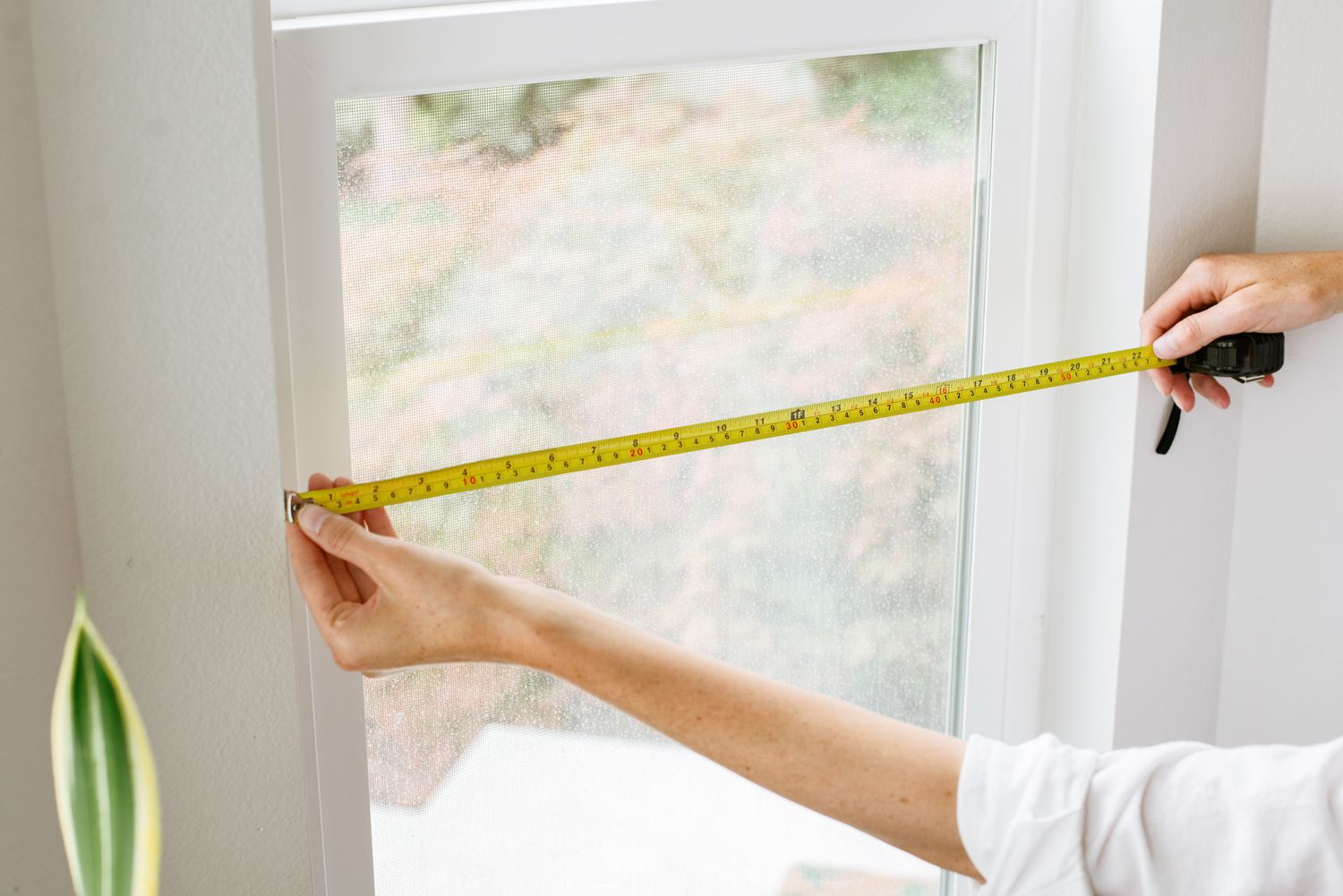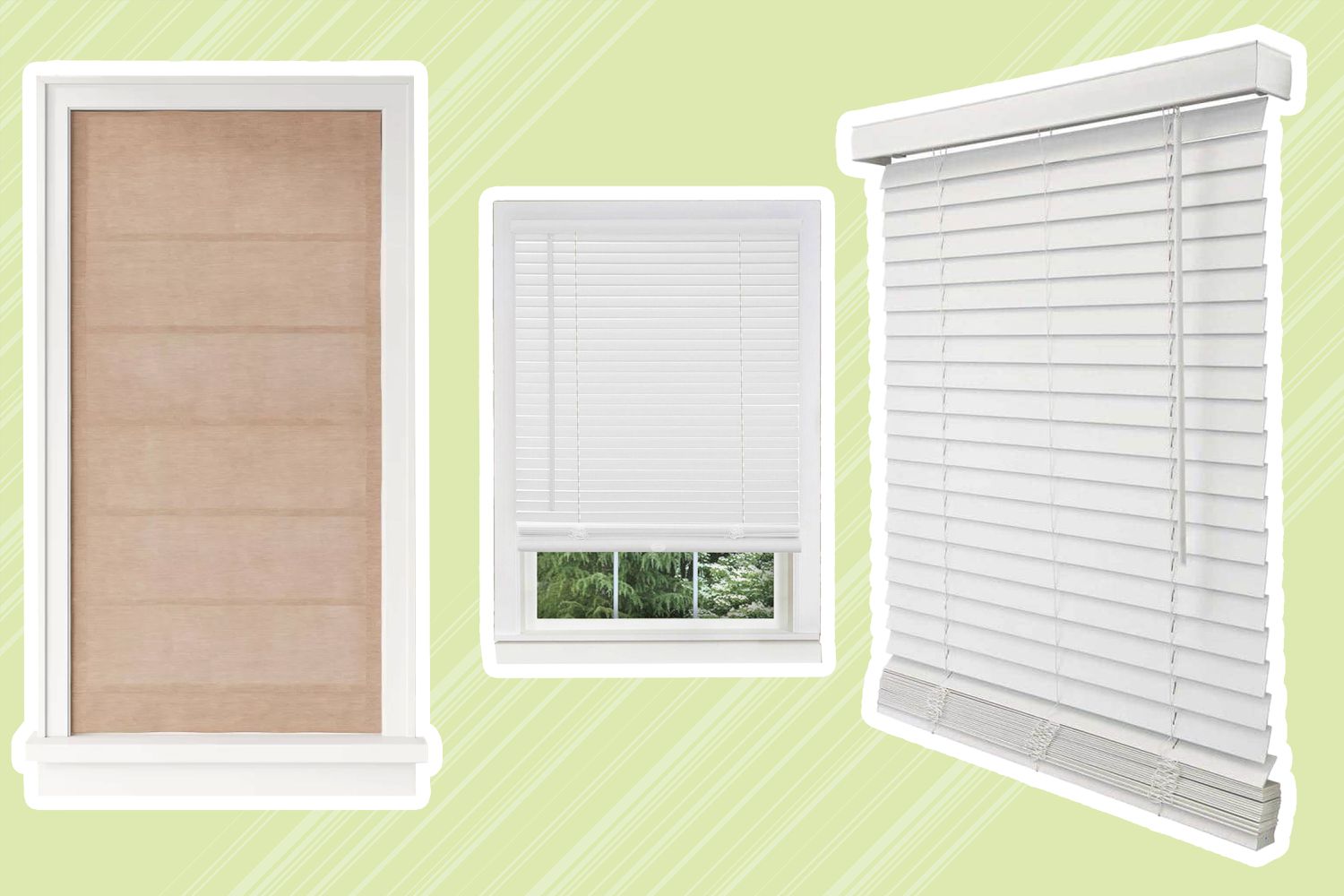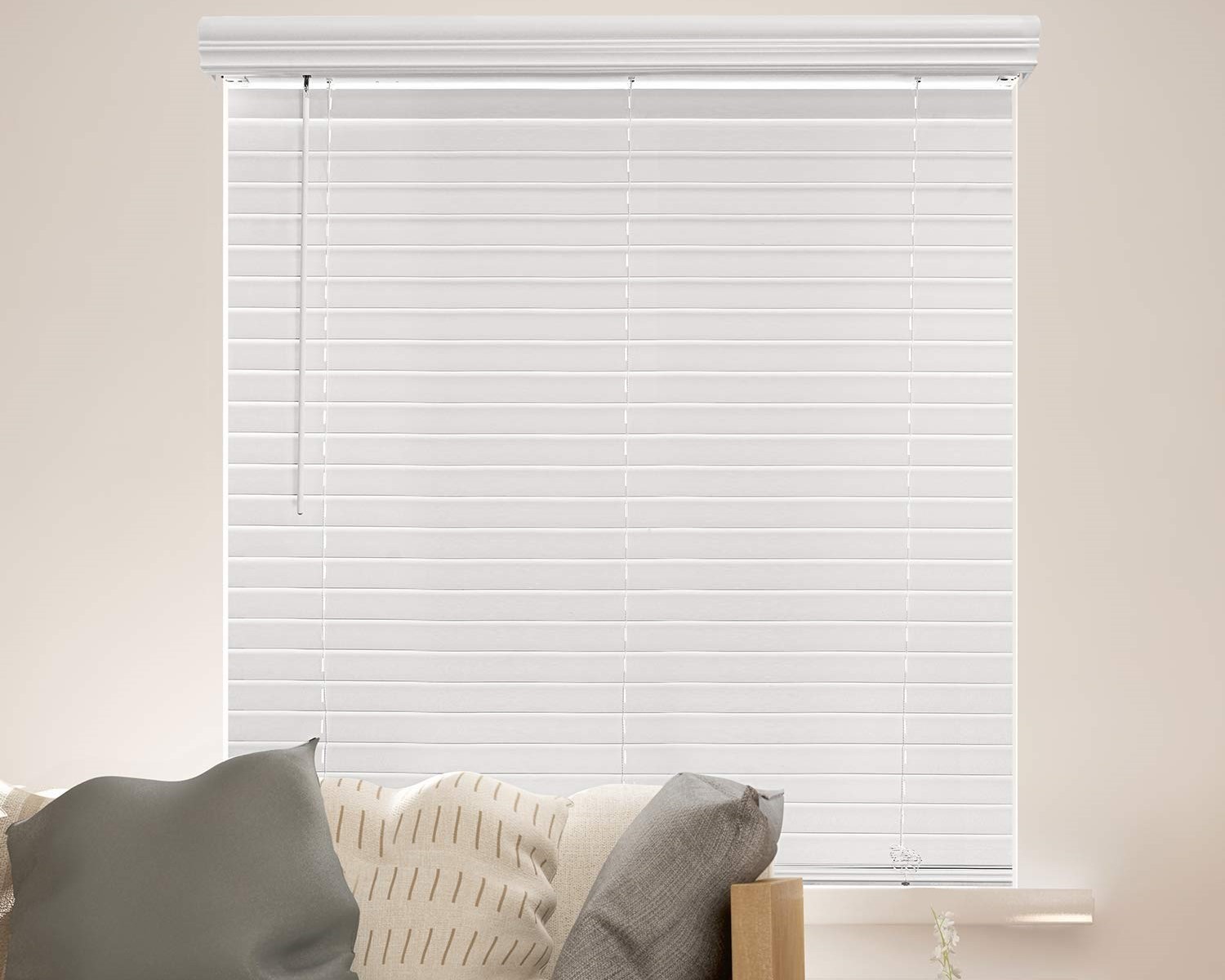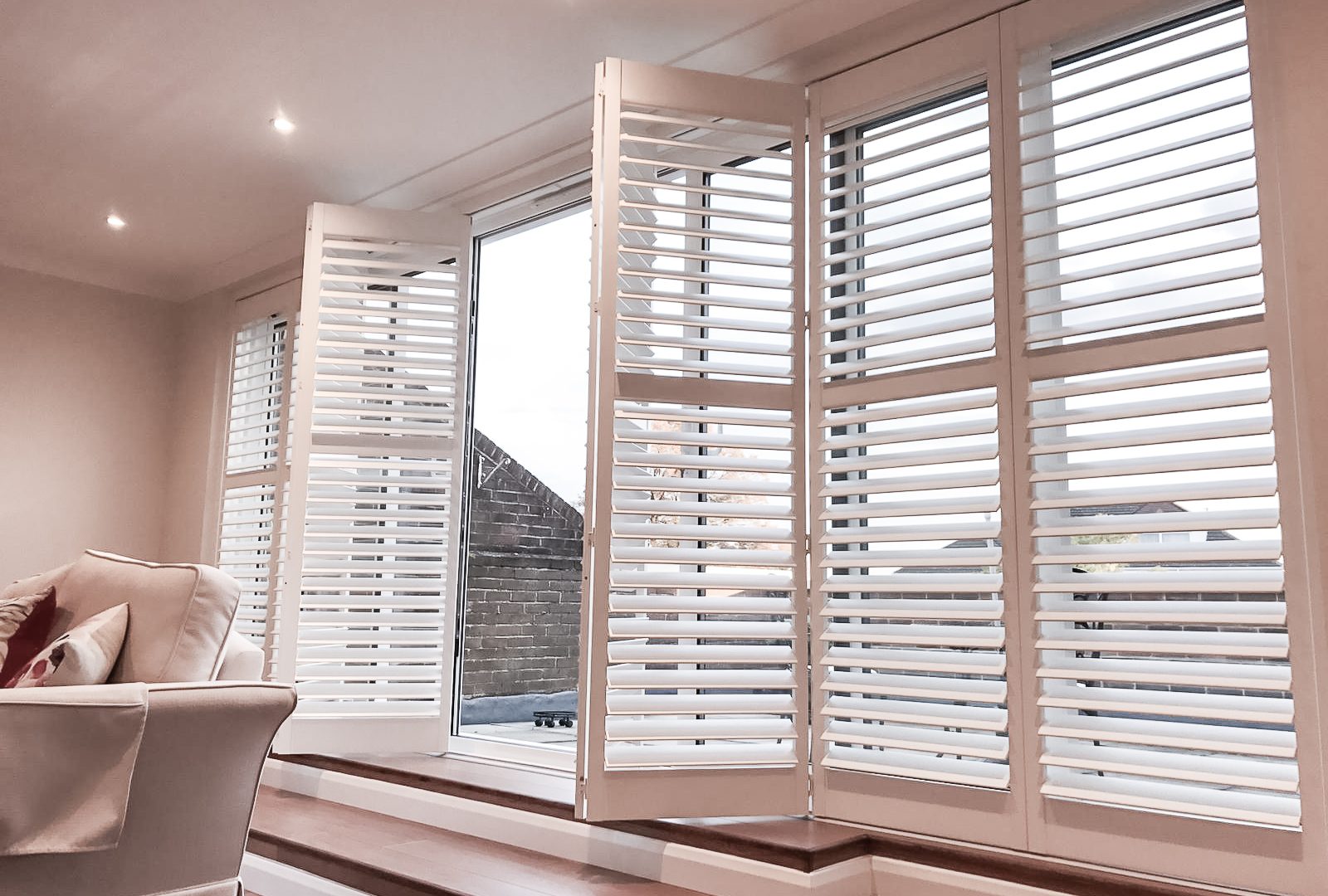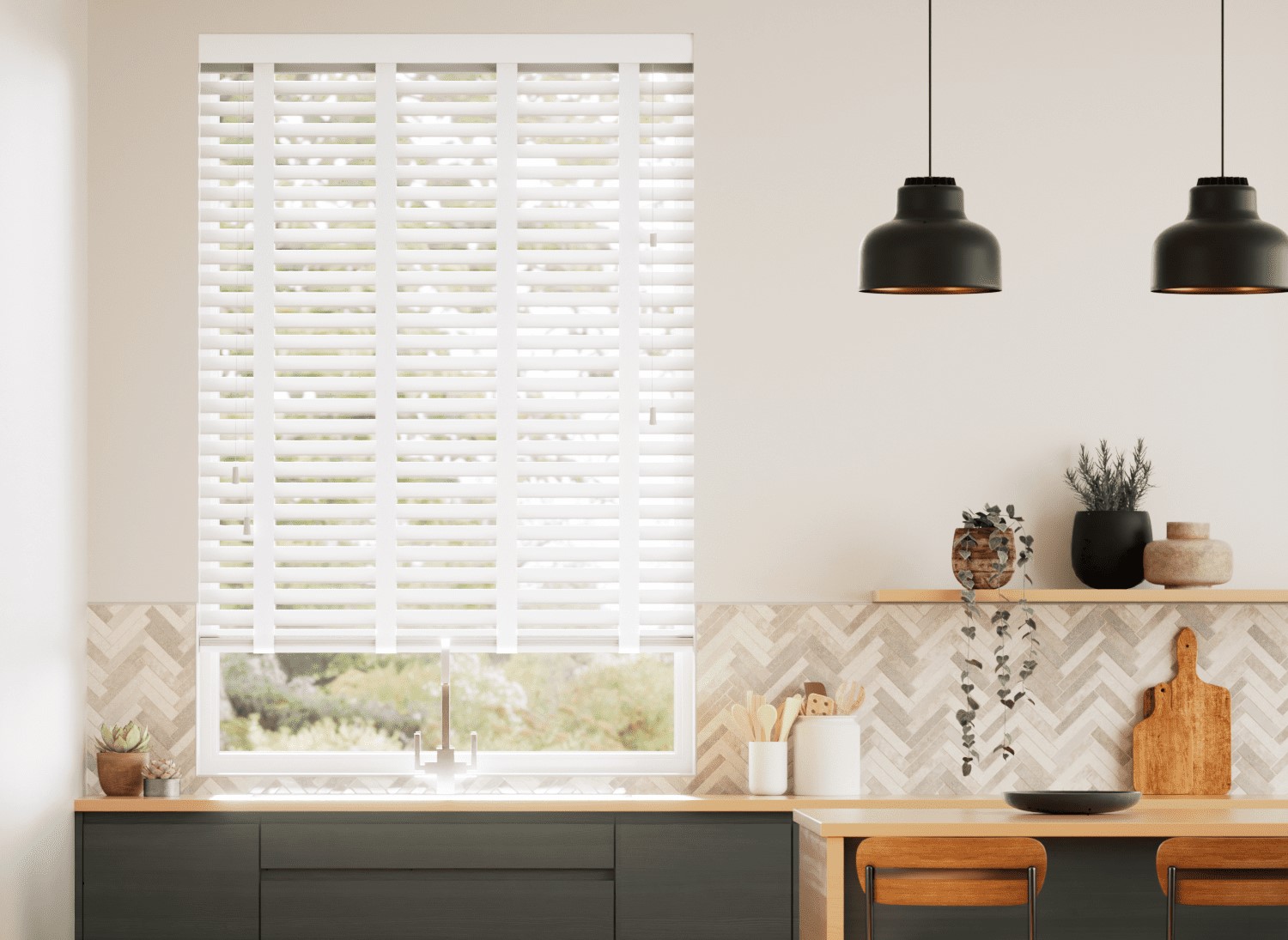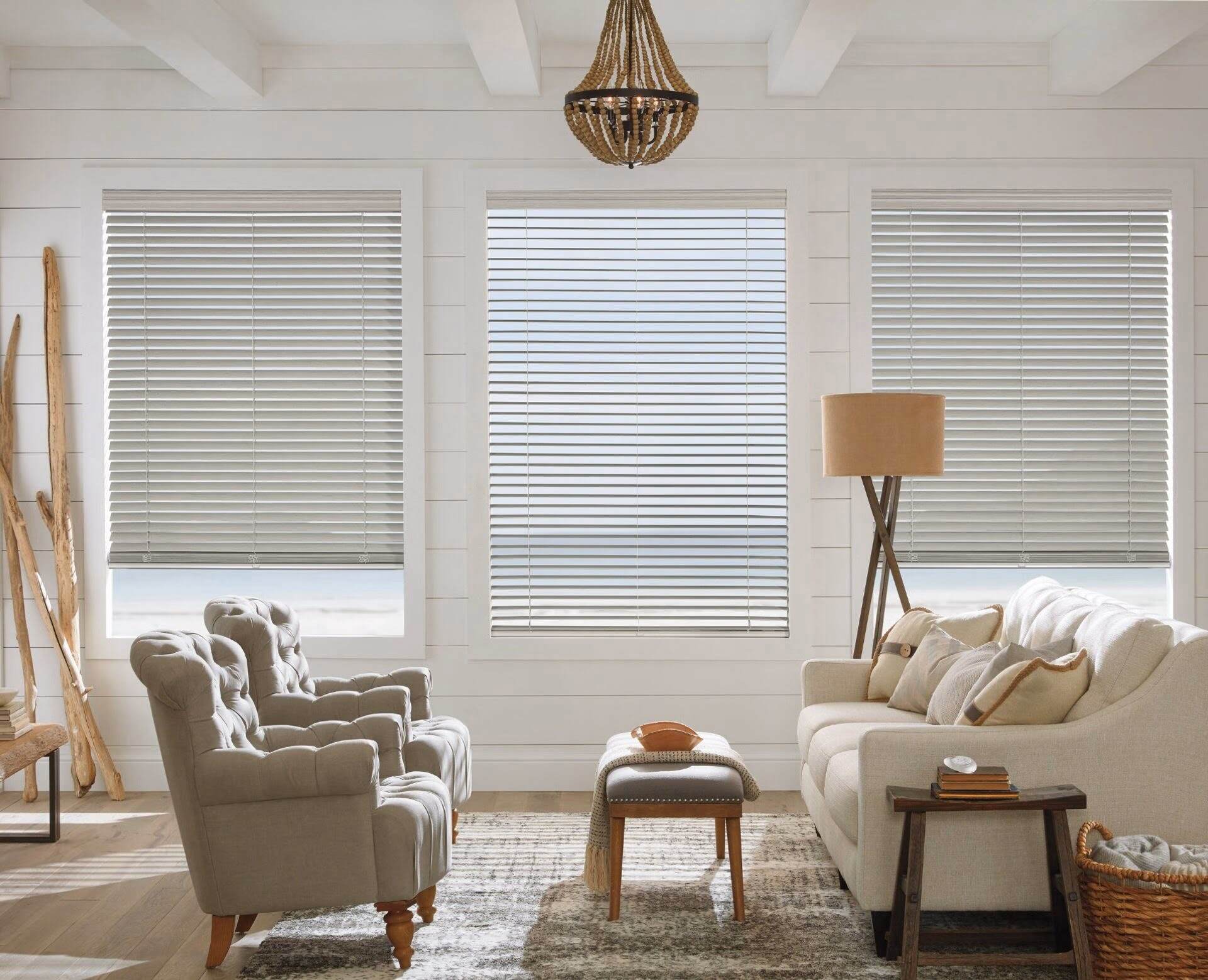

Articles
How Do Window Blinds Work
Modified: October 20, 2024
Discover how window blinds work in this informative article. Learn about the different types, materials, and mechanisms used in window blinds.
(Many of the links in this article redirect to a specific reviewed product. Your purchase of these products through affiliate links helps to generate commission for Storables.com, at no extra cost. Learn more)
Introduction
Window blinds are a versatile and practical window treatment solution that can enhance both the aesthetic appeal and functionality of any space. With their ability to adjust light, provide privacy, and add a touch of style to a room, window blinds have become a popular choice among homeowners and interior designers alike.
In this article, we will delve into the world of window blinds, exploring how they work, the various types available, the materials used in their construction, and the benefits they offer. Whether you are looking to upgrade your current window coverings or are in the process of designing a new space, understanding how window blinds function can help you make an informed decision.
So, let’s dive in and discover the fascinating mechanisms behind window blinds!
Key Takeaways:
- Window blinds offer a versatile and stylish solution for controlling light and privacy in any space. With a wide range of types, materials, and operating mechanisms, they provide customizable options to suit individual preferences and functional needs.
- Choosing and maintaining window blinds requires careful consideration of specific needs, accurate measurements, high-quality materials, and regular care. By following these tips, homeowners can ensure the longevity and optimal performance of their blinds while enhancing the overall ambiance of their space.
Read more: How Do Blinds Inside Windows Work
Types of Window Blinds
Window blinds come in a wide range of styles, materials, and designs, catering to different aesthetic preferences and functional requirements. Here are some of the most popular types of window blinds:
- Vertical Blinds: These blinds feature vertical slats that can be tilted and adjusted for light control. They are commonly used for large windows and sliding glass doors.
- Horizontal Blinds: Also known as Venetian blinds, these blinds have horizontal slats that can be tilted at various angles to regulate light and privacy. They are available in different materials such as wood, aluminum, and faux wood.
- Roman Blinds: Made from soft fabric, Roman blinds fold up evenly when raised and unfold smoothly when lowered. They create an elegant and sophisticated look in any room.
- Roller Blinds: These blinds consist of a single piece of fabric that rolls up and down. They are simple to operate and offer a sleek and minimalistic appearance.
- Pleated Blinds: Pleated blinds have a concertina-style design, with crisp folds that stack neatly at the top when the blind is raised. They are an excellent choice for windows with unusual shapes.
- Cellular/Honeycomb Blinds: These blinds feature a unique honeycomb-shaped design that traps air, providing excellent insulation properties. They are ideal for energy efficiency and light filtration.
- Wooden Blinds: Wooden blinds add a natural and warm touch to any interior. Made from various types of wood such as bamboo or basswood, they offer durability and timeless beauty.
- Aluminum Blinds: Sleek and modern, aluminum blinds are lightweight and highly durable. They are resistant to moisture, making them suitable for areas such as kitchens and bathrooms.
Each type of window blind has its unique features and benefits, allowing you to customize your window treatment to suit your personal style and functional needs. Consider the size and shape of your windows, the amount of privacy and light control desired, and the overall aesthetic of your space when choosing the right window blinds.
Materials Used in Window Blinds
Window blinds are manufactured using a variety of materials, each offering its own set of advantages and characteristics. The choice of material can impact the overall appearance, durability, and functionality of the blinds. Here are some commonly used materials in window blinds:
- Wood: Wood blinds are a classic choice that adds warmth and natural beauty to any space. They are available in various types of wood, including basswood, bamboo, and faux wood. Wood blinds provide excellent light control and insulation.
- Fabric: Fabric blinds, such as Roman blinds, are made from soft textiles and come in a wide range of colors and patterns. They offer a cozy and elegant look to windows while providing privacy and light filtering.
- Metal: Metal blinds, particularly aluminum blinds, are lightweight, durable, and resistant to moisture. They are commonly used in high-humidity areas such as kitchens and bathrooms. Metal blinds offer a sleek and modern aesthetic and are available in a variety of colors.
- Plastic/Vinyl: Plastic or vinyl blinds are an affordable and practical option. They are resistant to moisture and easy to clean, making them suitable for areas with high humidity, such as bathrooms and kitchens. Additionally, they come in a variety of colors and styles.
- Faux Wood: Faux wood blinds are an alternative to real wood blinds. They are made from composite materials that mimic the look of wood, offering an affordable and moisture-resistant option. Faux wood blinds are also an eco-friendly choice, as they do not involve the harvesting of real wood.
- Paper: Paper blinds, also known as paper shades or Japanese shoji blinds, are made from rice paper or other light-filtering materials. They create a soft and diffused light effect while providing privacy. Paper blinds are commonly used in minimalist and Japanese-inspired interior designs.
When choosing the material for your window blinds, consider factors such as the level of privacy and light control desired, the overall style of your space, and the maintenance requirements. Each material has its own unique characteristics, allowing you to find the perfect combination of functionality and aesthetic appeal for your windows.
Operating Mechanisms of Window Blinds
Window blinds feature various operating mechanisms that allow you to control their position, angle, and level of openness. Understanding the different operating mechanisms will help you choose the right type of blinds for your needs. Here are some common operating mechanisms found in window blinds:
- Corded: Corded blinds have a system of cords attached to the bottom rail of the blinds. By pulling the cords, you can raise or lower the blinds to the desired height. The angle of the blinds can be adjusted by twisting a wand or pulling a separate cord.
- Cordless: Cordless blinds offer a safer and cleaner look, as they eliminate the need for cords. Instead, they use a spring mechanism or a bottom rail handle to raise and lower the blinds. The angle adjustment can be done manually by gently pushing or pulling the bottom rail.
- Motorized: Motorized blinds are a convenient and modern option that allows you to control the blinds with the push of a button or through a remote control. They are powered by electric motors installed within the blinds and can be programmed to open or close at specific times.
- Wand-driven: Wand-driven blinds have a wand that, when twisted, adjusts the angle of the blinds’ slats. This mechanism is commonly found in vertical blinds and some horizontal blinds. The blinds can be opened and closed by manually pulling a cord or chain.
- Top-Down/Bottom-Up: This unique operating mechanism allows you to raise the blinds from the bottom or lower them from the top. It gives you flexibility in controlling privacy and light while still enjoying a view or maintaining privacy at eye level.
- Smart Home Integration: With the advancements in technology, many window blinds can now be integrated into smart home automation systems. This allows you to control the blinds using voice commands, smartphone apps, or even through home assistants like Amazon Alexa or Google Home.
The choice of operating mechanism depends on your personal preference, convenience, and the accessibility of your windows. Consider factors such as ease of use, safety, maintenance, and the level of control you desire when selecting the operating mechanism for your window blinds.
When operating window blinds, always ensure that the cords or mechanisms are functioning properly to avoid any accidents or damage to the blinds. Regularly inspect and maintain the blinds to keep them in good working condition.
Adjusting Light and Privacy with Window Blinds
Window blinds provide an effective and customizable solution for controlling the amount of light and privacy in a room. The adjustable nature of blinds allows you to easily regulate the entry of natural light and create the desired level of privacy. Here’s how window blinds help you achieve optimal light and privacy control:
Light Control: Window blinds give you the ability to adjust the amount of incoming light throughout the day. By tilting the slats or raising the blinds, you can manipulate the angle at which light enters the room. This allows you to create a soft and diffused light effect or block out direct sunlight, reducing glare and protecting your furniture and belongings from harmful UV rays. Blinds with different slat sizes and materials offer varying degrees of light control, allowing you to choose your preferred level of brightness.
Privacy: Window blinds are a great way to ensure privacy while still enjoying natural light. By closing the blinds, you can completely block any view from outside, preventing prying eyes from seeing into your space. Blinds with tighter slat closures, such as wooden or faux wood blinds, offer enhanced privacy. Alternatively, you can opt for top-down/bottom-up blinds, which allow you to maintain privacy at eye level while still allowing light to enter from the top.
Combining Light and Privacy: Many blinds offer a combination of light control and privacy features. For example, with the top-down/bottom-up mechanism, you can lower the blinds from the top to let in natural light while maintaining privacy by keeping the bottom portion closed. This flexibility allows you to strike a balance between enjoying natural light and protecting your privacy.
Day/Night Blinds: Some window blinds, such as day/night blinds or dual-combination blinds, offer even more versatility. These blinds feature two layers of fabric with alternating sheer and opaque sections. By aligning the sheer sections, you can enjoy filtered light while maintaining privacy. Adjusting the blinds to cover the sheer sections ensures complete privacy and light blockage.
Blackout Options: For spaces that require complete darkness, such as bedrooms or media rooms, blackout blinds are an ideal choice. These blinds are designed to block out all external light, creating a darkened environment perfect for sleep or watching movies. Blackout blinds often have special light-blocking features, such as overlapping slats or integrated side channels, to prevent light leaks around the edges of the blinds.
With the wide range of window blinds available, you can easily customize your light and privacy settings to suit your preferences. Whether you prefer diffused natural light, complete darkness, or just the right balance of privacy, window blinds offer you the flexibility to create the ideal ambiance in any room.
Read more: How To Remove Window Blinds
Benefits of Using Window Blinds
Window blinds offer numerous advantages, making them a popular choice for homeowners and designers alike. From enhancing the aesthetic appeal of a space to providing functional benefits, here are some key advantages of using window blinds:
- Light Control: Window blinds give you precise control over the amount of natural light entering a room. You can easily adjust the angle of the slats or raise/lower the blinds to regulate brightness, reduce glare, and protect your furniture and flooring from harmful UV rays.
- Privacy: Blinds allow you to maintain privacy while still enjoying natural light. By closing the blinds, you can block the view from outside, preventing prying eyes from seeing into your home. This is particularly important for ground-floor rooms or homes that face busy streets.
- Style and Aesthetics: Window blinds come in a wide range of designs, materials, and colors, allowing you to find the perfect match for your interior style. Whether you prefer a modern, minimalist look with sleek aluminum blinds or a cozy, traditional feel with wood blinds, there are endless options to complement your décor.
- Versatility: With different types of blinds available, such as vertical, horizontal, or Roman blinds, you can find a solution for any window shape or size. This versatility ensures that all windows in your home can benefit from the functionality and style of blinds.
- Energy Efficiency: Certain types of window blinds, such as cellular or honeycomb blinds, are designed with insulating properties. The unique honeycomb structure traps air, helping to regulate temperature and reduce energy consumption. This can lead to cost savings on heating and cooling bills over time.
- Durability: High-quality window blinds are built to last. Materials like wood, aluminum, and faux wood offer durability and withstand daily wear and tear. With proper care and maintenance, blinds can provide long-lasting functionality and aesthetics.
- Ease of Maintenance: Window blinds are relatively easy to clean and maintain. Regular dusting or wiping with a damp cloth keeps them looking fresh and ensures smooth operation. Unlike curtains that require frequent washing, blinds are low maintenance, making them a convenient option for busy households.
- Privacy and Safety: Blinds provide an added layer of privacy, keeping your personal space concealed from the outside world. Additionally, cordless or motorized blinds eliminate the risk of entanglement, making them a safer choice for homes with young children or pets.
Window blinds offer an excellent combination of style, functionality, and practicality. With their ability to control light, enhance privacy, and elevate the overall aesthetic of a space, blinds continue to be a favored window treatment option for homeowners seeking a versatile and visually appealing solution.
Tips for Choosing and Maintaining Window Blinds
Choosing and maintaining window blinds is essential for ensuring their longevity and optimal performance. Here are some tips to help you select the right blinds for your needs and keep them in pristine condition:
Consider Your Needs:
- Assess your requirements in terms of light control, privacy, and aesthetics. Consider the direction your windows face, the amount of natural light you want, and the level of privacy desired.
- Take into account the specific functionality of each type of blind and how it aligns with your preferences and lifestyle.
- Consider the overall style and interior design of your space to select blinds that complement the existing décor.
Measure Accurately:
- Take precise measurements of your windows before purchasing blinds to ensure a proper fit.
- Measure both the width and height of each window, accounting for any obstructions such as handles or window frames.
- If you are unsure about measuring, seek professional assistance to ensure accurate measurements and proper installation.
Choose High-Quality Materials:
- Invest in high-quality window blinds that are made from durable materials.
- Consider factors such as moisture resistance, UV protection, and insulation properties when selecting blinds.
- Opt for reputable brands or consult with an expert to ensure you choose blinds that are built to last.
Follow Manufacturer Guidelines:
- Read and follow the manufacturer’s guidelines for installation, operation, and maintenance of your window blinds.
- Be mindful of weight limits and usage instructions provided by the manufacturer.
- If motorized blinds are installed, familiarize yourself with the programming and operation instructions.
Clean Regularly:
- Dust your blinds regularly using a feather duster or a soft cloth. Pay attention to the slats or fabric and ensure thorough cleaning.
- If using a damp cloth or cleaning solution, check if it is suitable for the type of material your blinds are made from.
- Avoid excessive moisture or harsh chemicals that may damage or warp the blinds.
Repair and Maintain:
- Inspect your blinds periodically for any signs of damage or wear. Replace broken or worn components promptly to maintain functionality.
- For corded blinds, check the cords regularly for fraying or damage. Replace them if necessary to ensure safe operation.
- Follow any additional maintenance guidelines provided by the manufacturer, such as lubricating moving parts or adjusting tension.
Professional Cleaning and Repairs:
- If your blinds require deep cleaning or repairs beyond your expertise, consider hiring a professional service to ensure proper care and maintenance.
- Professional cleaning and maintenance can help extend the lifespan of your blinds and keep them looking their best.
By following these tips, you can make informed decisions when selecting window blinds and ensure their longevity with proper maintenance. Regular care and attention will keep your blinds functioning smoothly and enhance their aesthetic appeal for years to come.
Conclusion
Window blinds are a versatile and practical window treatment solution that can transform the look and functionality of any space. With their ability to control light, provide privacy, and enhance the aesthetic appeal of a room, blinds offer numerous benefits for homeowners and designers.
We explored the various types of window blinds, including vertical, horizontal, Roman, roller, pleated, cellular, wooden, and aluminum blinds. Each type offers its own style, features, and advantages, allowing you to choose the perfect blinds to suit your needs and preferences.
The materials used in window blinds, such as wood, fabric, metal, plastic/vinyl, faux wood, and paper, offer a wide range of options for durability, style, and light control. By selecting the right material, you can achieve the desired look while ensuring functionality and longevity.
The operating mechanisms of window blinds, be it corded, cordless, motorized, wand-driven, or top-down/bottom-up, provide different levels of convenience and control. Understanding these mechanisms helps you choose the most suitable operation style for your needs and lifestyle.
Window blinds allow precise adjustment of light and privacy levels in a room. By tilting slats, raising or lowering blinds, or utilizing top-down/bottom-up features, you can effortlessly regulate the entry of natural light and create the desired level of privacy.
Using window blinds offers numerous benefits, including efficient light control, enhanced privacy, style and aesthetics, versatility, energy efficiency, durability, ease of maintenance, and added safety. Blinds are a practical and visually appealing window treatment option that can enhance the functionality and ambiance of any space.
When choosing and maintaining window blinds, it is important to consider your specific needs, measure accurately, invest in high-quality materials, follow manufacturer guidelines, clean regularly, repair and maintain as needed, and seek professional assistance when necessary. By following these tips, you can enjoy the full benefits of window blinds and ensure their longevity.
In conclusion, window blinds offer a perfect balance between functionality and style, allowing you to take control of light, privacy, and aesthetics in your home or office. Whether it’s for controlling sunlight, enhancing privacy, or adding a touch of elegance to your space, window blinds are an excellent choice for any interior. So, go ahead and explore the world of window blinds to transform your windows into beautiful focal points that create the perfect atmosphere in every room.
Frequently Asked Questions about How Do Window Blinds Work
Was this page helpful?
At Storables.com, we guarantee accurate and reliable information. Our content, validated by Expert Board Contributors, is crafted following stringent Editorial Policies. We're committed to providing you with well-researched, expert-backed insights for all your informational needs.
